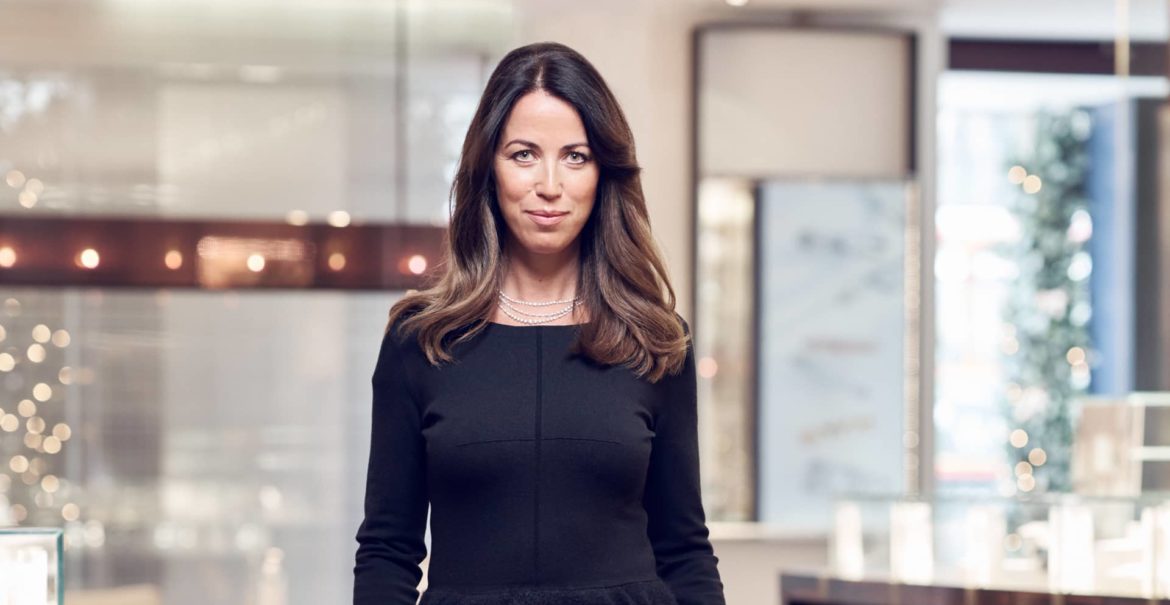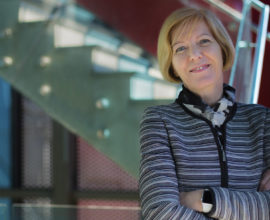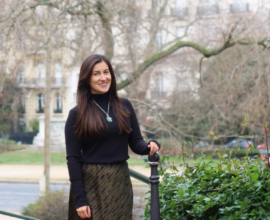Céline Assimon
The sparkling chameleon
![]() Reading Time: 12 minutes
Reading Time: 12 minutes
CEO of De Beers Jewellers and De Beers Forevermark
How did the daughter of a construction contractor with no connections, who grew up in a rural area of south-western France surrounded by cows, ever become the first female CEO of one of the most prestigious jewellery brands in the world? This is the remarkable trajectory of Céline Assimon. In 2001, she started in marketing with Piaget in NYC, then in 2011 for Louis Vuitton in NYC followed by Paris in 2015 as the worldwide head of high jewellery & high watchmaking sales, before re-joining Piaget in Geneva as its international high jewellery director. In 2018, at 41, she landed her first CEO position with Swiss de Grisogono. Today she holds no less than two CEO roles, as the head of De Beers Jewellers and De Beers Forevermark. She takes pride in the mining giant for its engagement in tracing every diamond it discovers and sells, and for raising high business, environmental and social standards for its own operations and the industry as a whole. Céline’s mission is to engage her consumers in both the beauty of the crafted diamonds as well as the beauty of their story, so that these precious symbols of connection and celebration can be worn with pride.
When we explain to Céline that this portrait series aims to reveal the human nature behind Audencia’s iconic alumni, she is immediately up for it. She tells of her regret that she didn’t identify inspiring leaders she could relate to when she was studying at Audencia 20 years ago. At the time, “They all seemed to have this cookie-cutter life, the suit and the wife at home. I wish I’d had access to CEOs who shared their personal stories, successes, mistakes and the fact that you can thrive if you learn from them.”
When looking back at her career to date, Céline makes a point of emphasising the hurdles she had to overcome. She is convinced that she wouldn’t have reached her current position if there hadn’t been a few difficulties and failures along the way. She highlights three in particular: her father’s struggles with running his business, her own countless rejections in the search for her first internship, and the experience of taking de Grisogono through bankruptcy.
Céline has long established her reputation in this coveted industry, but she doesn’t take success for granted. “I am trying to look to the future with a cool head and a dose of humility. Careers nowadays are very fluid, and I might not have my CEO title in a few years from now.” It is with the same refreshing candour that this self-described chameleon, petrol head and bon vivant reveals her immersion into the African American culture, her best red-carpet moments and her signature dish.
You and I are from the same year group and oddly, the first thing I could recollect is that you come from Corrèze. What else can you tell us about your upbringing?
Well remembered! Yes, I did grow up in that rural and remote region of France. This is evidence that distinctive assets are not just useful for brands, but they serve people too!
I am an only child but in a sense, I had a sister in the form of my dad’s business. He owned a construction company, and he was really hands on, working seven days a week. My mum did the accounts for my dad and also worked full time in a small accountancy firm. I followed every step of the journey of our family business. From a young age, I had a good idea of what it takes to run a business and realised early on that hard work doesn’t always pay off. The older I get, the more I look to the past and appreciate that when it comes to my work ethic, the biggest source of inspiration was very close to home.
Have you always wanted to work in the luxury sector?
I was an avid and competitive horse rider and for a long time I wanted to make a career of it. But when I accepted that most professional riders are born into riding families which wasn’t my case, I switched gears. In the small town where I went to school, there weren’t any careers counsellors or anyone to encourage me to sketch out bold dreams for my future. So my journey didn’t start with a vision, but instead with the realisation that I should choose a path that would offer me the widest range of possibilities, even if it meant a scientific baccalaureate with a lot of maths. I always dreaded maths…, which I find quite ironic now that I run big P&Ls …
My first job aged 15 helped me to start working out what would fulfil me in life. I was working in a summer camp, teaching riding to under-privileged 6 to 8 year olds, some from foster care, who lived in rundown housing around Paris (although this wasn’t true for all of them). My family was not wealthy, but they offered me a happy and safe childhood. There was a real “epiphany” moment when I realised that I needed to incorporate an element of gratitude into whatever I was going to pursue, no matter the difficulties and frustrations I would encounter. With my first pay cheque, I bought a ring and that was another revelation. I understood then and there that I was fascinated by craftsmanship; not just for fine jewellery but for any object that has been lovingly and expertly designed. I’ve always been curious about how things are made, by whom and for what occasion. I like the storytelling aspect and decided to find a role that would fulfil me creatively but also provide me the financial means to continue riding. Funnily enough, now that I have the means, I don’t have the time to ride!
While I was figuring it all out, there was one message that my friends – from primary school right up to Audencia – kept telling me: “Don’t worry about the future. You are independent, driven, outspoken, and resilient. You will always fall on your feet, and you know where you want to go.”
You studied a masters’ at Audencia from 1997 to 2001. What are your best memories from that time?
To be honest, I remember less about the curriculum at Audencia than the social life! I was part of the team that organised the triathlon. It was my first experience of project management and I remember the frantic chase to get sponsors. Solène and Hélène, amongst many in the team, were great leaders and partners and team effort was key: if you didn’t pull together, you failed. What an emotional rush it was when a whole year’s work, sweat (and tears) culminated in one huge weekend event!
The semester abroad at the University of Cincinnati (UC) was another highlight. Audencia nominated me for a special international marketing programme. There was only one place and I jumped at the opportunity. What I didn’t know was that it would send me to a different area of the campus, completely separate from fellow Audencians but also from all the other international students. Settling in was tough. With 60,000 students, the campus itself was bigger than my hometown! I was one of the few Caucasians in my dorm and it was a challenge to decipher the working-class African American & Latino culture around me. Although I was out of my comfort zone, I gradually made friends who introduced me to their fraternities. I discovered the realities of students who were juggling multiple jobs in grocery stores, being raised by single mums who in turn were juggling multiple jobs to send their kids to university, in a city where drugs and crime were rife. That was another moment of realisation and gratitude.
You don’t come from a family with connections to the luxury sector. How did you land your first internship?
I was well aware of my disadvantage, so I doubled down on resilience. I recently stumbled on a notepad on which I had listed all the brands I wanted to work for. I had written almost 100 applications and despite being like a dog with a bone, I was turned down by every single company. I was very disappointed, but I switched to my plan B. As a girl raised in the countryside, I enjoyed motorcycling; in fact, I am still a petrol head and fast cars are one of my favourite topics of conversation! This field proved easier for me to crack, but a few weeks before I was due to start an internship with Renault, I received a phone call from Cartier to invite me to an interview. It was for a role in the in-store visual merchandising team and I was so puzzled that I asked the interviewer why they thought I might be the right candidate. She told me that the person they had secured had bailed out on them – a Parisian with connections so the interviewer decided to give the underdog a chance. As it turned out, she was from the Dordogne, noticed my home postcode and was curious! In a nutshell, that’s how I got started. I got my final internship with Piaget in NYC by harassing the VP of marketing with daily phone calls. You can’t guarantee the outcome, but typically a lot of hard work and focus should allow you to get that hoped for result.
How do you explain your skyrocketing career?
In 2001, after finishing my internship in New York, I returned to Nantes to graduate. Everyone was planning their summer vacation and pushing back their job hunt to September. For me, the insecurity of not knowing when my first pay cheque would come in made me anxious: I could not relax on a beach while being uncertain about my professional future! So I was focused on getting into the saddle as quickly as possible. My one-year internship shaped my ambition and I was determined to pursue a career in the luxury industry. In a lucky break, the head of marketing I reported to at Piaget got promoted and I was offered her role. Initially they thought the job was too big for me but I impressed them during the interview and I started on September 3rd in NYC. I think my progression has something to do with my willingness to seize opportunities as they came along.
After 5 years at Piaget, there was nowhere higher for me to go as I was reporting to the CEO and at 27, I was obviously too young & still inexperienced to take his job. So I started looking around for positions in Europe but with an American corporate mindset. Over there, recruiters expect you to do vertical or lateral moves every three years or so. In France on the other hand, I was told repeatedly to stay put and favour stability, something I refused to do. I had my sights set on LVMH and, even if it took me a few years, I got there in the end. What I have always avoided is complacency. The moment I am in a role where I just need to steer the ship, I get less excited. I am a builder; I like to create from scratch, develop my toolbox, and define my management style along the way. At least that’s how it works for me at the moment; maybe in 5 years’s time I will have less energy for that.
Sometimes, however, the opportunities I seized led to difficult situations. For example, I had to take a company through bankruptcy after the loss of shareholder support. Some people would have just left and let the liquidators handle it, but I decided to be there and support the team as much as I could. Emotionally, it was very hard but the way I manage my teams, P&L and cash flow today is definitely coloured by this experience. I never want to go through that again.
When I look back, the risks I took in different companies, sizes and cultures have paid off. I know I have big areas for improvement, but I also know that I am a bit of a chameleon, and that adaptability is an asset of mine.
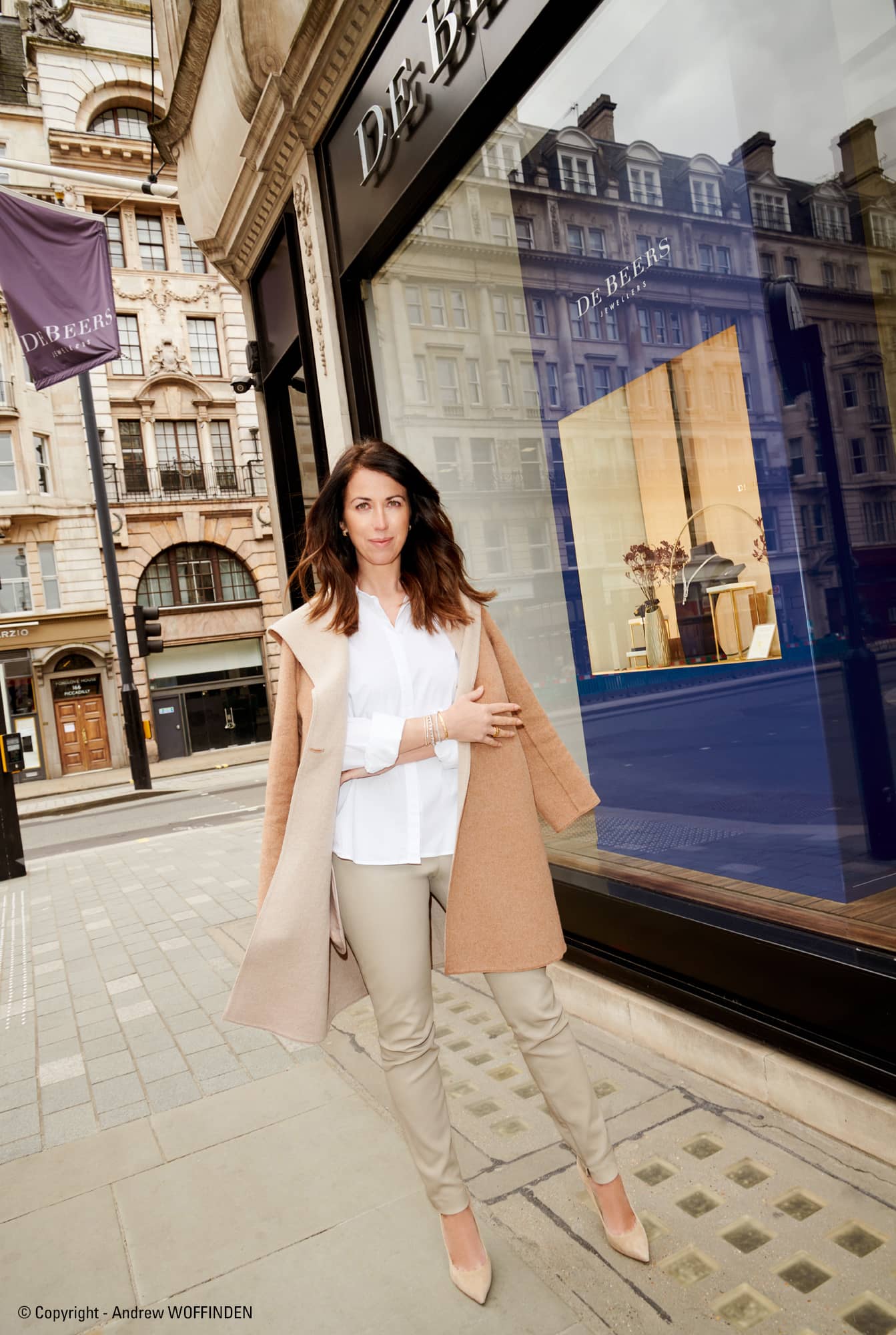
Do you feel that being a woman has ever brought extra challenges?
20 years ago, when I started in the industry, it felt like I had stepped into a gentleman’s club. The environment was very masculine, paternalistic even, with clients being invited to sign deals over a cigar or on the golf course. Early on, I had to learn to stand up for myself and push back when I was put into situations that didn’t align with my values. Fortunately, the world has moved on and it was worth hanging in there because at one point or another, organisations bid farewell to those toxic personalities.
I have been lucky to report to many powerful women – in particular at Cartier and Vuitton, who displayed exemplary managerial behaviour with kindness and fairness. Many of the men in leadership positions in the luxury industry had limited field experience. To stand out from the crowd, I was keen to demonstrate my ability to roll up my sleeves and pull together with the teams who were dealing with clients on a day-to-day basis. It gave me credibility, which made me a better manager: my teams know they can come to me and I’ll have their back. What I was lacked in connections and in masculinity, I made up for with business acumen and kinship with the people who deliver the business.
Tell us more about your current double CEO role
De Beers is a widely known brand because one third of the natural diamonds that are recovered globally come from a De Beers mine in South Africa, Namibia, Botswana or Canada. In September 2020, the group CEO invited me to join a junior division – the brand and consumer market unit, and take over the De Beers Jewellers brand. Then, in September 2021, I was also tasked with leading the De Beers Forevermark brand, so we can approach the market with a differentiated offer. Forevermark caters to a more premium clientele and every one of its diamond comes with the promise that it is beautiful, rare and responsibly sourced. Less than 1% of the world’s natural diamonds are eligible for selection as a De Beers Jewellers and De Beers Forevermark.
You mentioned traceability. The mining industry has a legacy of social and environmental controversies until more recent transformations. How is CSR part of your role?
In 2006, after the Blood Diamond movie was released, De Beers implemented brand new processes to secure its supply chain and was instrumental in setting up a standard for the industry to ensure that the diamonds sold are conflict free. When I joined De Beers, the processes were being strengthened further, and we realised that we could only thrive by transforming into a purpose-led company. De Beers is strongly invested in leading ethical practices, protecting the natural world, and partnering local communities. For example, we have recently celebrated 11 years during which, thanks to the healthcare provided, no employees’ babies were born with HIV. This was very uplifting for me even if consumers were not aware of what goes on behind the scenes. For my first year I had two key objectives: the first was to put creativity back into the brand, pushing the limits in terms of aesthetic and research. The second was to translate the values that we live by and the positive impact we are making into a clear narrative for consumers.
In the countries where we operate, there are no alternative resources to natural diamonds; the gems allow boys -and girls- to go to school, get healthcare and get a leg up in life. I know it might be laughable to think that luxury and social purpose can go together but it comforts me to know that in a way, I’m not just helping one more woman to look pretty, but I am also contributing to doing some good in the world.
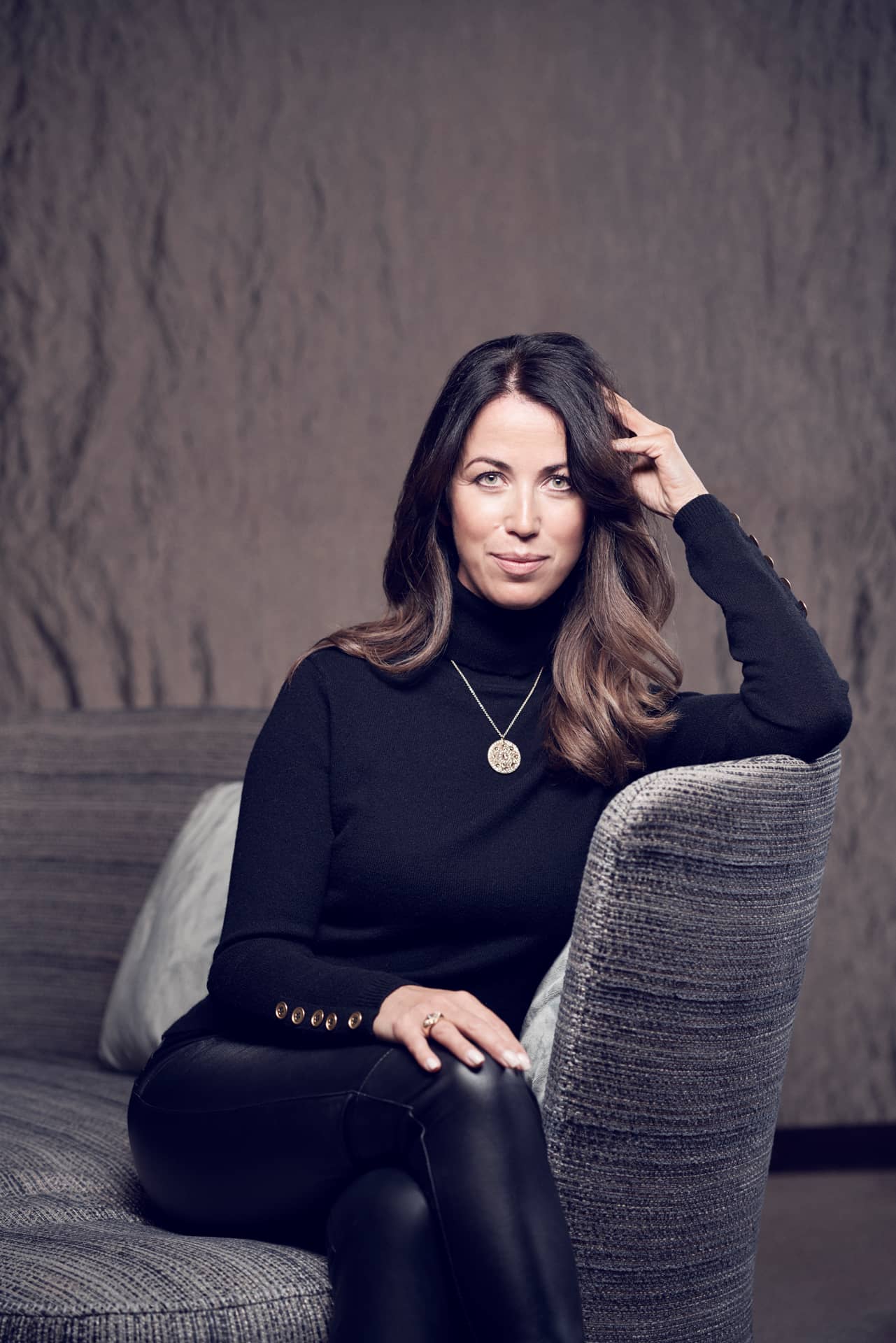
Now for an essential question: we assume that your role also involves engaging with your brands’ celebrity ambassadors and glamming them up for their red-carpet appearances. Are there any big names you’d like to drop for us?
Ah ha! Well, I have met many stunning and smart celebrities along the way. From my recent encounters, I would say that Cindy Bruna is wise beyond her years and as sharp and kind as she is beautiful. I have met Alec Baldwin – recently in the news for the tragic reasons I won’t mention. I hosted him and his wife Hilaria at a New York event a couple of years ago; it was quite refreshing and fun to discuss politics and current affairs with him.
Is there a particular city that your business travels have led you to and that you’d like to single out?
China is a priority for our network development over the coming year. Our latest store opened in Chengdu at the IFS Mall. Chengdu is one of my favourite cities in China: it’s very sophisticated yet anchored in unique surroundings (and home of the panda!). In normal times, I’d typically go there a couple of times a year.
What do you do in your spare time? Do you manage to leave your work behind?
I have a daughter who is 10 and her father and I are divorced. He is a diplomat currently based in Qatar and before that he was in Afghanistan, so my daughter is with me full time. I want to be there for her, so it often means that I forego my own needs and I just grab little moments for myself whenever I can. I know it’s going to sound shallow, but I love having my hair done! It’s my treat. Joking apart, I don’t hike, paraglide or climb mountains, that’s not me. But I am a pretty good cook and my kitchen is my happy place. “Confit de canard aux pommes de terre sarladaises”* was already a signature dish of mine during my years at Audencia! I love hosting meals and mixing people; this is what I miss the most from my pre-Covid world. There’s nothing like a fabulous meal with different people to reinvent the world.
Overall, I find it hard to unplug – I guess because I never saw my family doing so, but also because it’s a privilege to feel so passionately about my job. I am conscious of how my behaviour influences others, especially my daughter. I want her to have a career as fulfilling as mine, but I am also aware that we shouldn’t be so caught up in it that we forget to manage time for ourselves. Retirement might well be a disaster for me!
*a speciality from Céline’s native region in southwestern France; duck confit served with potatoes cooked in goose fat, garlic and parsley.
